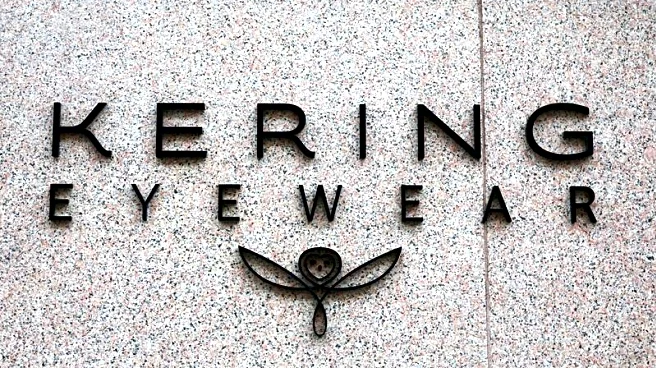What's Happening?
A recent study conducted by Vestiaire Collective and the Boston Consulting Group (BCG) reveals that the second-hand fashion and vintage luxury market is projected to grow significantly, reaching a market volume of up to $360 billion by 2030. This growth rate is three times higher than that of the new goods market, with an annual increase of 10 percent. Currently, the second-hand market accounts for 8 percent of total fashion and luxury sales, expected to rise to 10 percent over the next five years. The report, based on a survey of 7,800 Vestiaire Collective users, highlights the increasing integration of resale into consumer shopping behavior, particularly among Generation Z, who are driving the growth with their preference for unique and affordable items.
Why It's Important?
The rapid expansion of the second-hand market signifies a shift in consumer behavior towards more sustainable and cost-effective shopping options. This trend is particularly pronounced among younger consumers, such as Generation Z, who prioritize affordability and uniqueness in their purchases. The growth of the second-hand market presents opportunities for fashion and luxury brands to tap into new revenue streams and engage with environmentally conscious consumers. Additionally, the adoption of Digital Product Passports (DPPs) is becoming crucial for ensuring authenticity and transparency, further enhancing consumer trust and potentially increasing sales in the resale sector.
What's Next?
As the second-hand market continues to expand, fashion and luxury brands may increasingly adopt strategies to integrate resale into their business models. This could involve partnerships with resale platforms or the development of their own resale channels. The growing importance of Digital Product Passports suggests that brands will need to invest in technologies that enhance product transparency and authenticity. Furthermore, regulatory approaches in the U.S. and Europe may continue to support the growth of the second-hand market, encouraging brands to innovate and adapt to changing consumer preferences.
Beyond the Headlines
The rise of the second-hand market challenges traditional perceptions of sustainability in fashion. While resale is often marketed as a sustainable option, the report suggests that it can also drive additional consumption, as consumers use resale to finance new purchases. This raises questions about the true environmental impact of the second-hand market and highlights the need for brands to address these concerns transparently. The integration of Digital Product Passports could play a key role in addressing these issues by providing detailed product information and ensuring authenticity.











